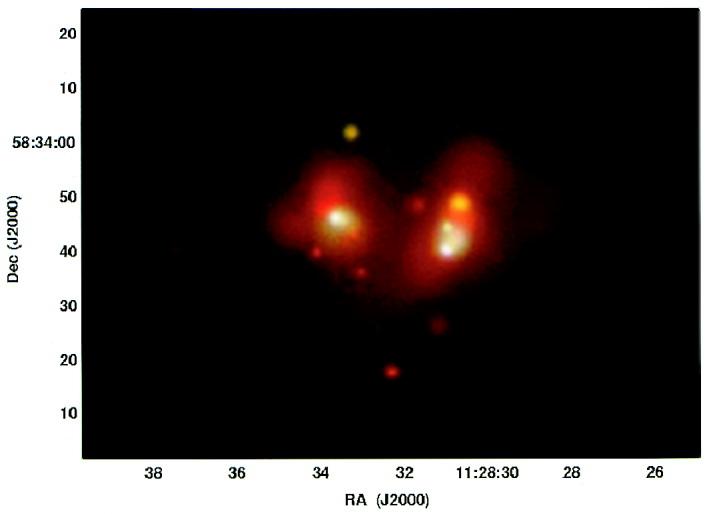
 Credit: A. Zezas, M. J. Ward and S. S. Murray,
The Astrophysical Journal, Vol. 594, p. L31
Credit: A. Zezas, M. J. Ward and S. S. Murray,
The Astrophysical Journal, Vol. 594, p. L31
Scene of a Crash
Galaxies sometimes collide. These collisions stir things up enough that gas clouds in the galaxies can start to form new stars. Dust in these galaxies gets heated by the young hot stars and shines brightly in the infrared. Because of this these interacting, star-forming galaxies can be identified by their high infrared luminosities. But because these galaxies are so dusty, many interesting features are hidden by thick dust clouds. That's where X-rays come in, since X-rays can penetrate through the dust. The image above is a "true-color" image of the luminous IR galaxy Arp 299 taken by the Chandra X-ray Observatory. In this image, color corresponds to the energy of the detected X-ray emission: red is low energy or "soft" emission, green medium and blue high energy or "hard" emission. The Chandra observation pinpoints 18 bright X-ray sources (including the nuclei of both component galaxies, one of which shows characteristics similar to the nuclei of "active galaxies") and diffuse hot gas which baths the galaxy. These results suggest that crashes between galaxies are one of the ways galaxies fuel their supermassive black hole centers.
Last Week *
HEA Dictionary * Archive
* Search HEAPOW
* Education
Each week the HEASARC
brings you new, exciting and beautiful images from X-ray and Gamma ray
astronomy. Check back each week and be sure to check out the HEAPOW archive!
Page Author: Dr. Michael F. Corcoran
Last modified Tuesday, 27-Feb-2024 10:06:36 EST


